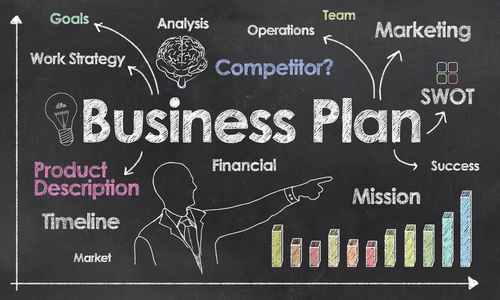A Beginner’s Guide To Creating A Successful App
Since the beginning of mobile application development, silicon valley tech innovators, hungry entrepreneurs, and regular average tech geeks all have had many ideas to become the next killer app. Many of these young minds have triumphed, though even more have not. The triumphant app founders, like Jan Koum and Brian Acton who created Whatsapp or the Garret Camp and Travis Kalanick of the ever-popular Uber app, were victorious because they had formulated a killer plan for there app.
So, if you too have an idea for an app, but don’t know where to start, then keep reading. This article is a step-by-step beginner’s guide to creating a successful app.
Are you ready to take your vision and turn it into a reality? Then, let’s get started!
I Have An Idea For An App. But, What’s Next?

It’s important to know that not every app makes it onto the market. Just like any invention or patent, you must find a way to market your product if you want to become successful as an app creator.
Apps don’t become popular simply because of a great idea.
You must strategize a plan of action for your app to make it onto the app scene.
You must also note that you can’t just create an app out of thin air. It takes time, money, and resources to transform an idea into a living, breathing application utilized by people throughout the nation or even the world.
When you have a good app idea but aren’t sure how to move forward, here is our Guide To Creating A Successful App:
- Do your research
- Create an app monetization strategy/business plan
- Find investors/business partners
- Hire an application development A-team
- Harvest the power of an MVP
- Publish your app
Step 1: Do Your Research
Let’s say that you were planning on taking a vacation to another country.
Keep in mind that you’ve never been to this country before, you aren’t familiar with the lay of the land, and you may not even speak the common language.
What do you do?
Do you just wing it and see how it plays out organically? Sure, that’s one option.
However, the best way to know for sure that you’ll get the most out of the experience is to make a plan. That starts with doing your research on the best attractions, restaurants, activities, sights, nightlife, etc., to ensure that you have the best possible vacation.
You can do this by reading about tour guides, talking to friends who have visited the country before, researching review websites or apps, watch YouTube videos of other peoples’ experiences, and the list goes on and on.
When it comes to doing something that you’ve never done before, it’s always advisable to conduct thorough, mindful research.
When developing your app, treat it like you would if it were a serious business project. It’s perfectly fine to get excited and passionate about your concept, but remember that the mobile app business is extremely competitive.
There may even be a hundred other people out there actively trying to develop an app with the same exact concept as yours. The only difference between succeeding and failing in your app creation endeavors is the plan that you formulate.
When conducting your market research, ask yourself the right questions:
- What kind of app do I want to create?
- How will my app benefit the user?
- Who is my target audience? Are they men or women? Are they adults or children? What devices do they use, and how often?
- Are there similar apps out there? If so, how many? How big/successful are they? In what app stores are they present?
- How will my app be different from competitors? What features will my app include that other apps don’t?
- What are the pros and cons of my app idea?
- How can I make money off my app? Do I show ads? Do I offer in-app purchases? Do I sell data to third-parties?
These are just a few of the primary questions required to find the answers to if you want to develop your app.
Once you’ve answered these questions, and then some, then you can move on to the next phase of your app development strategy.
Step 2: Create An App Monetization Strategy
Based on your findings during the research phase, take the time to craft a meaningful business concept/app monetization strategy.
It’s crucial that you write these things down instead of just keeping them all in your head. Staying organized during this phase is essential to how you carry out your plan.
Also, when writing down your ideas for how to monetize your app, you may find that you’ve stumbled across new useful ideas that could become another driving force behind getting your app created and distributed.
The chances are that you’re developing a mobile application from one or two starting points:
- You wish to create a mobile application as an embarkment of your new company.
- You have an existing business, and you wish to develop a mobile app that orchestrates alongside your company website.
Either way, you want to make money from your mobile app, right?
In-App Purchases
Let’s say that you already have an existing website, and you want to create a mobile app that allows customers to make purchases directly from the app.
Obviously, this is a great idea given the digital times we’re currently living in.
Besides, users prefer buying products and services via a mobile app than on a mobile site. The simple fact of the matter is that the consumer prioritizes convenience more than any other purchasing factor.
Customers want what they want, and they want it now!

However, if you want your mobile app to be a purchasing machine that reflects your existing website, you MUST ensure that your website is optimized for mobile devices.
The key is to get customers coming back. To do this, your application must be user-friendly, fast, and have smooth navigation.
Along with convenience, speed is a significant factor. When developing your mobile application, you want to create the least amount of purchasing steps possible for the customer.
Basically, you want to make it as easy as possible for customers to make a purchase.
Remember, purchases on a mobile app get charged directly to a customer’s credit card associated with their App Store or Google Play account.
You may want to keep this in mind when creating purchasing CTAs on your mobile app as well. Consider adding a CTA that links directly to the customer’s Apple Pay, Google Pay, Android Pay, or other customer payment systems linked to their devices.
So, if you want to create a mobile app, then implementing in-app purchasing features is definitely a smart choice, especially for e-commerce applications.
Subscriptions & Freemium Models
Most apps these days are leveraging subscription-based models as a way to generate revenue.
This model is highly effective when luring in customers since people tend to get put off when they see apps available for purchase right off the bat (even if it’s only $0.99).
A subscription model involves the user downloading your app for free and utilizing some of the app’s features for a specific length of time (7-14/day free trials are the most common choices).
Once this period is over, the user will need to pay the required recurring fee to continue using the app.
When it comes to implementing your in-app purchasing features, you want to consider providing choices. A 3-package model is a general way to go.
Provide options for a basic, standard, and premium-style payment package plan. For instance, Netflix abides by this pricing model, where you receive a free trial for 30 days with the option to buy the basic package for $8.99, the standard package for $13.99, and the premium package for $17.99.
These packages are priced based on how many devices you can watch simultaneously and how many mobile devices you can have downloaded. They also add in HD and Ultra HD capabilities in their pricing.
When creating your app’s monetization strategy, consider implementing a subscription model. Categorize your pricing packages according to feature access and make this clear for the consumer to understand.
Keep it simple, stupid! It’s only technology!
After considering these factors, think about your next move. What can you do along with this subscription model to generate revenue?
In-App Advertising
Think about Pandora’s subscription-based model. They leverage the power of both subscription and in-app advertising models.
They do this by allowing the user to download the app for free with a limited number of song skips, plus in-app advertising after every few songs played.
To opt-out of the annoying ads, you have to purchase a subscription.
Genius, right? Well, don’t take our word for it; the numbers speak for themselves.
By 2019, Pandora wracked in a whopping $1.72 billion, with over 63 million active users and 6.2 million paid subscribers. That’s a lot of cheddar!
There are five different types of in-add adverts to choose from:
- Banner ads
- Interstitial ads
- Native ads
- Affiliate ads
- Reward ads
Generally, more app developers are becoming increasingly concerned about in-app ads affecting the overall user experience.
Conversations around this idea have emerged, leaving app developers to beg the question, “which is the best ad format to protect the UX?”
Since these conversations, mobile app advertisers have done more to protect the user experience to ensure the app’s survival.
Data Monetization
We talk a lot about the user experience when talking about creating an app.
This is because it’s crucial to keeping your target audience constantly engaged with your app. Without consistent audience engagement, you can’t sustain your app long term.
So, data monetization can become your best friend in terms of generating revenue.
“But, what is data monetization,” you may ask.
Data monetization refers to information gathered whenever a user interacts with your app. This information is then anonymized and quantified, where it can be used for several different things, from building smart cities to delivering more personalized advertising to users.
This monetization strategy is the most focused on the user and their app experience.
Combined with the fact that your app can hold onto a phenomenal user experience, data monetization allows you to generate revenue with every user that engages with your app.
These different app monetization models all serve a common purpose, though they do so in different ways. Choosing the best way to monetize your app involves taking the time to research your industry and identify which models work best with your business type.
Step 3: Find Investors/Business Partners
Let’s face it.
Unless you already have millions of dollars at your disposal, you’ll never be able to create an app on your own.
You require investment capital to get your app off the ground and downloaded onto millions of potential users’ phones.
The most successful app creators didn’t get to where they are now on their own. They had investors and partners.
If you’re on the hunt for a quality business partner, consider choosing one who has similar goals but has qualities you lack.
For instance, if you’re a creative spirit or “idea man” who lacks business intelligence, choose a partner who is all about the benjamins, baby!
It’s crucial to have the right balance in a business partner relationship.
To create and promote a mobile app, you need to invest. If you don’t have the capital, then get it elsewhere. This is where you’ll need to wow investors.
To get investors interested in your idea, you must sell it.

You need a killer business plan (drawn up neatly and organized) to present to your investors in the right business setting. Planning your pitch to investors is equally as important as planning your business model for your app.
No investor will become interested in your app unless they see that you’re both passionate, and you have an excellent business concept.
Instead of finding an angel investor or venture capitalist to provide the capital for your app development project, you could consider crowdfunding.
Crowdfunding platforms like GoFundMe, Indiegogo, or Kickstarter are excellent choices for obtaining the funds needed to build your app.
You could also consider social media networking. Social media networks, like LinkedIn, is a great tool used to network with investors and other like-minded entrepreneurs. If you choose this option, create daily posts about your app to gain attention and raise interest among potential investors.
Once you’ve attained the proper funds to develop your app, it’s time to put your money where your mouth is.
Step 4: Hire An Application Development A-Team
When developing your new app, it’s essential to have the right team behind you. Unless you’re a master computer programmer or app developer, you need to hire out.
The best kind of help you can find is through professional software development companies. They have the resources that you need to develop your app quickly, efficiently, and affordably.
Understandably, you’d be very hesitant or cautious about who you choose to develop your application.
After all, this app is your baby, and you want to take good care of it.
So, when in doubt, revert to step one and conduct your research. Research the best software development companies that specialize in developing mobile applications just like yours.
Hire a team of app developers who understand your needs and are cost-effective. Remember, application development can get pricey if you’re not careful, so you want to ensure that you’re getting the most out of your money.
Step 5: Harvest The Power Of An MVP
We’re going to let you in on a little secret. There has never been an app that was released with all of its final features in application development history.
Even market leaders and tech powerhouses, like Microsoft and Google, release and edit apps incrementally, pivoting according to feedback.
Let go of the dream of bringing a perfect product to market immediately, and identify a few must-have features to really nail down.
We always advise you to begin with a Minimal Viable Product (MVP) to pilot your proof of concept for additional investors.
An MVP is the younger brother to your finalized concept.
It’s a loosely designed product with just enough functionality to entice early adopters or convince a group of partners to funnel more money into your project.
Have your development team build a viable solution and aggregate the feedback. Learn where the holes in the design are and fix them.
Harvesting an MVP’s power could mean the difference between gaining enough funding to develop your project to its fullest potential or becoming another statistic as someone who “attempted” to create an app but failed.
Step 6: Publish Your App
Once you’ve perfected your application and are ready to launch, you must first think about how you want to make the world know that your new app is ready for download.
How will you promote your app? What platforms will you leverage to promote your app? Will you create a landing page or post blogs?
Consider creating an in-depth, comprehensive marketing roadmap.
This will help you uncover different strategies for getting your app on the map (sort of speak).
If you have any funding leftover from your investors, consider investing in hiring a marketing team to promote your app via multiple digital channels.
Remember, developing the app is only half the battle. You must effectively promote your app on various mediums to get people to know about it.
If you choose to hire outside help, like freelancers, marketers, designers, or partner companies, make sure that your work is protected.
Sign a Non-Disclosure Agreement (NDA) to ensure that all shared information is kept entirely confidential between all signing parties.
You also want to consider signing an NDA with possible investors when presenting your ideas to them. Remember, you should mutually sign an NDA before you begin sharing ANY information related to your app.
Remember this – when an app developer creates the code for your application, he/she owns it and has all the rights to use that code. The same goes for designers and marketers.
Before conducting business with these outside entities, it’s paramount that you clearly state that all content, designs, code, etc., that’s produced by the designer, marketer, developer, etc., will become YOUR intellectual property (not theirs).
You should consider drawing up a contract/agreement that protects your intellectual property rights to avoid theft.
Also, don’t forget to copyright and trademark your app for additional protection purposes.
The Bottom Line
With everything that was previously mentioned in this article, there is one final aspect of the process that is highly demanded of you, the app founder.
You must get out of your own way.
Oftentimes, business owners struggle with self-confidence, and their business suffers for it. Don’t let this happen to you.
The most challenging part of app development is to get going initially, but after you get rolling, you must keep rolling.
Don’t get discouraged if something goes wrong. Don’t quit at the first sign of trouble. If you really want to develop a successful app, then you must remain vigilant.
Theodore Roosevelt once said, “nothing in this world worth having comes easy.”
This speaks true for everything, especially app development. Think about the most successful apps on the market. You have Facebook, WhatsApp, Instagram, TikTok, Uber, and the list goes on and on.
Do you think it was easy for any of these companies to get to where they are today? No, we think not.
That’s why you must make the right business decisions and stay focused.
Hiring a trusted mobile app development partner will allow you to plan your market strategy and forget about the technicalities. The right partner will guide you and work tirelessly to breathe life into your idea.
In the current digital climate, there are three app development imperatives: adaptability, scalability, and viability.
At Gloify, we tap into these qualities by allocating the time to properly curate ideas and develop incrementally using a feedback-driven roadmap.
In actuality, it’s not that difficult to get started. The question that you must ask yourself is, “do I want to get started, or do I want my app to remain just an idea?”
Well, if you decide to pursue your dreams, then give Gloify a call. We are highly experienced and dedicated app developers team who are eager to hear your story and see how we can help.

